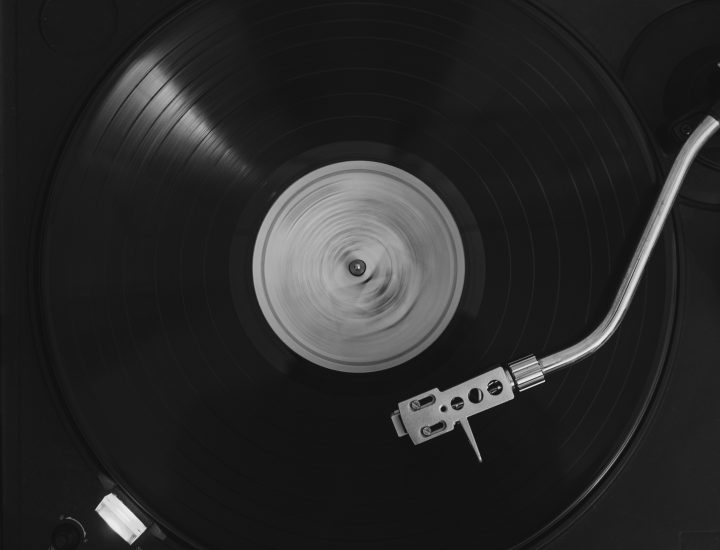So, you are just beginning on your turntable journey and keep hearing the dichotomy of moving coil vs moving magnet cartridges being talked of repeatedly? Or, perhaps you have long known about these things, being your social group’s resident audiophile, and simply wish to brush up on your knowledge before making a new acquisition to your listening environment?
Whatever your reason for being right here right now, let me welcome you to this exploration of the dichotomy between the moving coil vs moving magnet turntable cartridge, carving out a byway through what turntable cartridges are in the first place and why they are so important.
Table of Contents
- What Is a Cartridge?
- The Moving Magnet Cartridge
- Moving Magnet Cartridge
- Final Tones
- FAQs Moving Coil vs Moving Magnet
What Is a Cartridge?
Before we go on to understand the various differences between the cartridges of the moving coil vs moving magnet, we must first comprehend what cartridges are in the first place, and how they are one of the most important of the turntable setup ideas.

The cartridge, quite simply, is that which contains what those in the know refer to as the stylus or needle – that which reads the grooves of a record when pressed against its spinning surface and turns their delicate vibrational data into audio signals.
Though referred to by a few different names – magnetic cartridges, phono cartridges, moving coil cartridges, etc – they can almost always be found at the end of the tonearm, i.e., at the end of the mechanical arm that is raised and lowered over the record in question.
The cartridge itself can be, and in fact is, constructed from a whole host of different materials depending on the price point, ranging from plastic, metal, and even more select wood grains and precious for those feeling more extravagant.
However, though there is no end to the amount of different turntable and record players models in the world today, there are a significant number of similarities between them all, namely: small magnets, wire coils, and the unifying needle itself, being tipped as it with another precious stone like diamond.
It is believed by many audiophiles that the cartridge on a turntable is a surefire way to gauge the price and quality of the turntable to which they are attached, whereas a more expensive record player is likely going to have a cartridge made of mixed metal or even a precious metal like gold, and inversely a less expensive turntable might be fitted with an aluminum or particle wood cartridge (i.e., Medium Density Fibreboard, or MDF).
Seeing as it is the main messenger of vibrations in the surface of the record to their being emitted out of the speakers, one should be able to easily see just how important the cartridge is in any turntable setup.
The Moving Magnet Cartridge
First, in this investigation between moving coil vs moving magnet cartridges, we shine our investigative headlamps sequentially onto the former.
The moving coil within this kind of cartridge is a small electromagnetic generator with the inner magnet and coils reversed, with the coils attached to the cantilever and moving within the field of a permanent magnet, with small coils dealt from very thin wire.
This small size can translate to an increase in susceptibility to external noise and ground hum, for the number of potential coil windings that the whole mechanism can support is significantly reduced, with a subsequently reduced signal output. The resulting signal, therefore, is only a few hundred microvolts.
With such a low average noise input, it is more difficult to design dedicated preamps for the moving coil cartridge, not to mention those that are needed to make it work in the first place, with most choosing to use a step up transformer instead.
This all sounds pretty negative, but would certainly have been more of a problem in the past. Thanks to various technological advancements, there are several models of moving coil cartridges by several brands that have output levels on par with their moving magnet counterparts, rendering this more or less a problem of the past.
The historical repercussions still remain, though, and due to their small size and necessitating of precise handling, not to mention a higher price point, the moving coil cartridge is generally more often the domain of the apprentice audiophile and beyond, who do so upon claims of a better performance. This is, of course, subjective and should be taken with a pinch of salt, or at least considered considering alongside the various benefits and weaknesses…
Benefits
Many believe that the moving coil vs moving magnet cartridge is overall lighter in weight, which should seem obvious if we really think about it, for the moving coil inherently needs to be lighter in order to vibrate properly and to move effectively within its bounds while still making contact with the wires in the back of the cartridge that connects it and the vibrations that it is acting as messenger for to the speakers.
A subsequent benefit from this is that it is easier to manage the pressure and angle at which the whole cartridge makes contact with the record.
The main pull for a moving coil cartridge seems, though, to be the promise of a more detailed sound palette, with many an audiophile purporting that the vibrating coils within the cartridge are able to pick up on some of the more delicate and subtle changes in the makeup of the record during the process of the needle/stylus being dragged across it.

Overall, the sound is deemed to be fuller, boasting more detailed highs and lows and mids from across the frequency spectrum. Thus, if you are indeed someone who revels in the minute details of a recording as a point of contention, then the moving coil cartridge is going to be indispensable.
Drawbacks
One of the main drawbacks of the moving coil vs moving cartridge, and one that will be of special significance to those less financially spoiled, is the expense of the former over the latter.
Far from being some negligible and inconsequential amount, the sum is significantly more than that for the moving magnet cartridge, so it should come as no surprise to hear that the former is more often the domain of financially able audiophiles who have the money to burn.
They cost more to manufacture for being so small and more delicate and sensitive, a sensitivity that an audiophile would argue bears fruits in the overall sound fidelity.
They are also more expensive to upkeep, too. Being more specialized and more delicate, they will no doubt need the help of a professional if anything should go awry, likely enough since they are inherently so much more fragile (and would be distorted dearly should you try to fix it yourself).
The magnets in the moving magnet cartridge can be replaced or modified by almost anyone, while the coils in a moving coil cartridge are sensitive and need precise and professional attention.
The expenses pile up, and anyone wanting to invest likewise should be prepared for the added expensive of hiring a professional if something goes wrong.
Moving Magnet Cartridge
On the opposite side of the moving coil vs moving magnet cartridge dichotomy which this article has established, we have the moving magnet cartridge, whose cantilever carries a small magnet instead of operating on the basis of coils.
There are, however, similarities and allusions to be drawn, for this magnet is positioned between two sets of fixed coils, wherein the magnet and the coil(s) together form what is essentially a small electromagnetic generator. The magnet vibrates in response to the stylus and needle tracing through the grooves of the record which in turn induces a current into the coils, which is in turn sent through the stereo system to the corresponding speakers.
The magnet within is small with little mass – and is not joined to the cartridge as it might be otherwise. It is, thus, believed that such a cartridge stylus, if properly adjusted, will follow the grooves more honestly and with less tracking force (tracking force being understood as the downward pressure enacted on a stylus to ensure that it traces as accurately as possible the grooves upon the face of the record in question.
This can sometimes go schizoid and jump all over the place, of especial significance if the record is warped enough to be more potato chip than vinyl disc.
There are, in fact, different kinds of moving magnet cartridge, which will be of note to those looking to invest already. There are moving iron and induced magnet types which use a moving piece of iron or iron alloy metal coupled with the cantilever instead of a magnet.
Likewise, there are also cartridges in which there is a permanent and larger magnet over the coils of the cartridge which provides the necessary and requisite magnetic flux for the sound to be emitted as desired.
Benefits
In contrast with that of the moving coil, the moving magnet cartridge produces a steady sound that is going to be consistently loud and that will work well enough with just about any amplifier you can imagine, at scarcely any point requiring specialist knowledge to set it up properly, with only a baseline need for preamplification.
Another point of contentious comparison is the amount of maintenance each need, with the moving magnet cartridge needing far less than the moving coil cartridge.
In fact, just about anyone can replace the magnet within the former, whereas the maintenance and upkeep of the latter will more than likely require the need of a professional technician and/or electrician comfortable with dealing in the delicate and sensitive wire coils of which the latter’s inner machinations are comprised.
The moving magnet cartridge is in turn more compatible with more turntables, too, meaning they are likely going to be easier to install owing to their convivial relationship with a whole host of other audio equipment. The high output of the cartridge also means that there will be no need to use specialized and dedicated preamps to amplify the comparatively weak signal of a moving coil cartridge.
Even after all of this, the moving magnet cartridge is considerably cheaper than the moving coil cartridges, which can be somewhat overpriced in places. They cost less to manufacture, there being less care needed in the process, less moving parts and less intricate windings of coils.
All of this makes them a perfect option for those just starting out and/or not able to splash the cash like they might wish to, for a moving magnet cartridge will more than do the job of properly representing your record collection, no questions asked.
Weaknesses
Therefore, if we are to follow logic’s drawn out and crusty path, we ought to see that the strengths of the moving coil vs moving magnet cartridge will be the drawbacks of the moving magnet cartridge, reflected as in a looking glass.
For example, the moving magnet cartridge is almost certainly going to be heavier, no matter how much, for its central magnetic component is inherently heavier than a small and intricate winding of coils like that present in the moving coil cartridge.
In this way, the tonearm at whose end they reside will have to be set up accordingly, at a certain pressure to avoid any excess wear imbibed onto the surface of the records it meets – those who know their stuff will tell you that a narrower stylus is indispensable when coupled with a moving magnet cartridge.
Equally, the moving coil cartridge is believed by some to offer a more nuanced sound when compared with the moving magnet cartridge, offering a supposedly slightly less detailed sound. Magnets are inherently less delicate and thus less sensitive than wire coilers, heavier and bigger, with an overall sound that is bigger, warmer, meatier and so on.
This can, however, be something desirable, especially for certain genres of music that prize warmth and bass response – any dub DJ’s ears ought to be pricked right about now! Yes, that’s right – even the choice of the cartridge can have an enormous effect on the overall tone of the records spun, of particular significance if you are to be blasting them out over a massive sound system.
Final Tones
Well, there you have it! Hopefully, this short and comprehensive route through the dichotomy of moving coil vs moving magnet turntable cartridges has left you somewhat the wiser and less overwhelmed at the very thought of making such an acquisition yourself in the future. At the very least, we hope that this has been enough of an eye-opener of how important a turntable cartridge is in the overall sound produced, sometimes far more than the quality of the record in question.
FAQs Moving Coil vs Moving Magnet
Is moving coil better than moving magnet?
Though there are admittedly several benefits of the moving coil vs moving magnet cartridge, neither is inherently better than the other. An audiophile might come at this saying that moving coil cartridges offer a more detailed sound, but if a collector is looking to spin records with a meatier and warmer tone, e.g. dub and the like, then the moving magnet cartridge is going to be the way to go.
How do I know if my turntable is moving magnet or moving coil?
The easiest way to tell if a cartridge contains a moving magnet or a moving coil would be to do some research online, which would save you the hassle and potential heartbreak of opening up the cartridge and doing some expensive or even irreparable harm to it. If necessary, though, this is possible and can indeed be done by just about anyone, though the utmost care ought to be taken, lest you need to replace certain parts inside, which will be even more expensive in the case of a moving coil cartridge.
What is moving magnet and moving coil?
Both are types of turntable cartridge, though each come at the task of being a cartridge from different angles. The moving magnet takes its namesake from the magnet within, which is relied upon to transmit the grooves’ vibrational data. Likewise and inversely, the moving coil cartridge instead uses delicate and tightly wound coils to do the same thing. There are various benefits and drawbacks to each which would be well worth considering before rushing into the purchasing of either one or the other.
What is the difference between MC and MM?
Neither is inherently better, and in fact both have significant advantages and disadvantages. The moving magnet cartridge is the heavier of the two and the meatier in terms of tone, but also has a desirably higher output and is easier to maintain, not to mention being far more compatible with more types of hi fi setups, as well as being less expensive. Inversely, the magnet coil cartridge is the lighter of the two and offers a supposedly more nuanced sound palette, but is also considerably more expensive and more difficult to maintain, residing in the domain of the well off audiophile.





